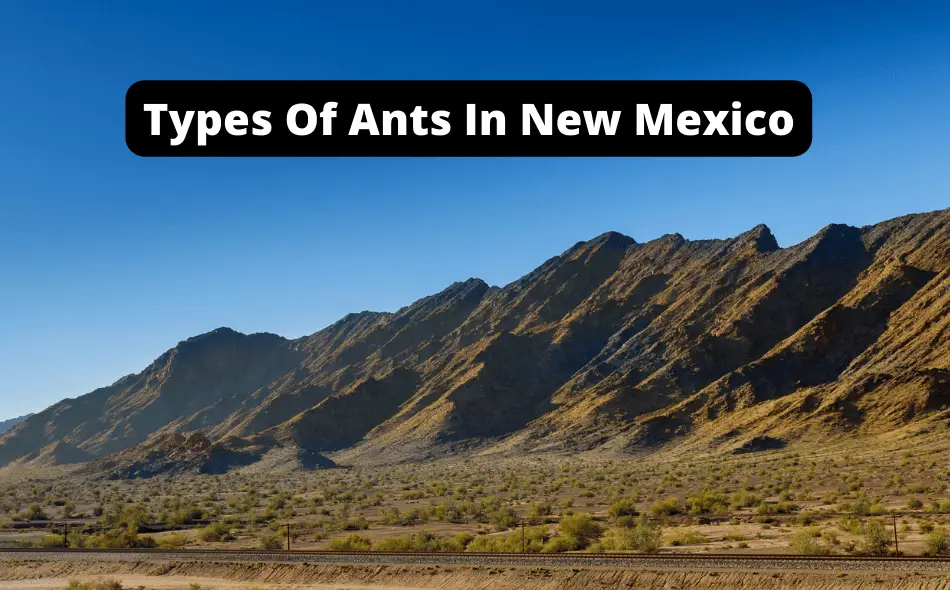Ants can be found almost everywhere in the world, but the type of ants will differ in each place.
New Mexico is a state located in the southwestern region of the United States and is known for its unique blend of Native American, Hispanic, and Anglo cultures. The state boasts a diverse landscape, including rugged mountains, vast deserts, and lush forests.
Visitors to New Mexico can explore the ancient ruins of the Ancestral Pueblo people at Chaco Canyon or hike through the stunning landscapes of the Santa Fe National Forest.
Not only that, New Mexico is home to a number of unique attractions, such as the Roswell UFO Museum, the White Sands National Monument, and the world-renowned International Balloon Fiesta.
And while we’re on the topic of unique attractions, we can’t forget to mention the state’s famous tarantula migration or its thriving population of prairie dogs. If you’re looking for a truly one-of-a-kind experience, then New Mexico is the place for you.
While all of this is nice, we can’t forget the cool ants that are in New Mexico. These ants listed below would be perfect to start your ant-keeping journey, as they’re well-adjusted to New Mexico’s humidity, water, and temperature!
Types Of Ants In New Mexico
New Mexico is LOADED with ants. These include Acrobat Ants, Argentine Ants, Bigheaded Ants, Carpenter Ants, Crazy Ants, ‘Field Ants, Harvester Ants, Imported Fire Ants, Little Black Ants, Odorous House Ants, Pavement Ants, Pharaoh Ants, Pyramid Ants, Small honey Ants, Southern fire Ants, Thief Ants, Velvety Tree Ants, and Yellow Ants.
Argentine Ant
An ant that is dominant in northern Argentina, Bolivia, Uruguay, Paraguay, and southern Brazil is called the Argentine ant, known initially as Iridomyrmex humilis.
They have spread to many different regions that have a subtropical climate. The ants can fit through fractures and openings as tiny as 1 millimeter in diameter.
These ants range in length from 1.6 to 2.8 millimeters. The Queens are taller and longer than the worker ants, measuring about 4.2–6.4 millimeters in length.

These ants will establish colonies under the dirt, in crevices in concrete pillars, within boards or timbers, or even amongst the walls in human homes.
Due to their limited capacity to construct deeper homes, they typically build shallow nesting sites in natural settings, usually behind tiny stones or scattered fallen leaves.
Nevertheless, Argentine ants will quickly take up any area, eating and invading all the different types of insects within the same ecosystem.
Carpenter Ant
Carpenter ants got their name because they dig wood to make their nests, creating neat tunnels within the wood.
These ants will only chew and burrow through the wood to build nests; Interestingly, they do not consume wood.
Depending on the species, Carpenter ants’ length ranges from 12 to 25 mm.
Carpenter ants that are black are frequent pests, but these insects can also be all-black, all-red, or all-brown.
When mature, the black western carpenter ants colony has ten to twenty thousand workers.


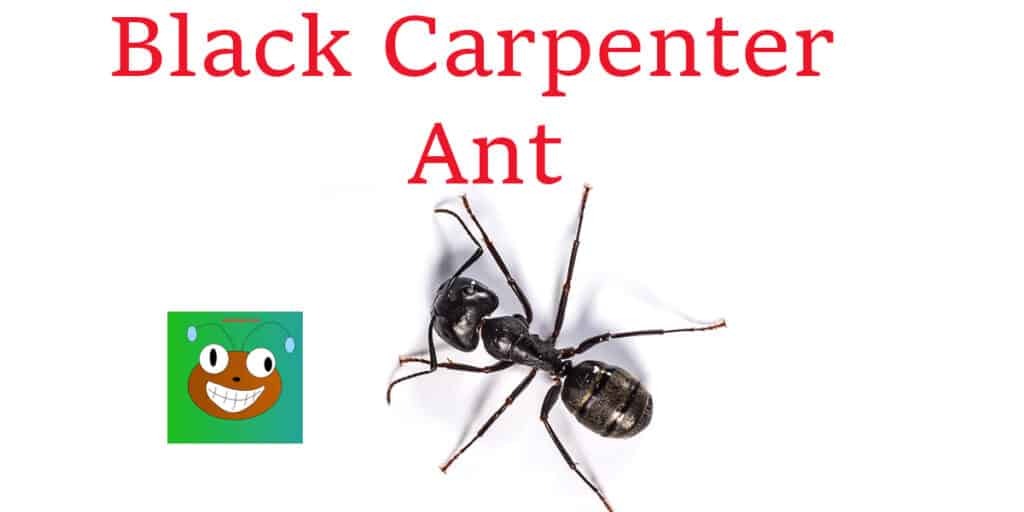
Incredibly, some big colonies have more than fifty thousand ants.
In most territories, there is only one active, wingless Queen. The colony must be older than two years before the production of swarmers takes place (potential new queens).
Instead, swarmers are produced the year before and kept in the nest during winter in preparation for the ensuing years’ dispersal.
In the east of the US, swarmers arrive from May through August, whereas in the west, they appear from February till June.
Crazy Ant
The Gulf Coast area has recently been overrun by the golden crazy ant, also known as Nylanderia fulva.
These American species thrive in unaltered natural settings and have been impacted by human habitation and pollution.
Infestations discovered in Houston circa 2002 are now dispersed and may be found along the Gulf Coast and the Hill Country to the northwest.
The diameter of a single infestation can measure kilometers, and they are approximately 1/8 of an inch in size.

In the areas where these ants establish themselves, they expand into incredibly dense colonies, displacing local ants and numerous arthropods, including the foreign fire ant which came earlier.
Additionally, these ants pose a hazard to all other species.
The success of creatures that need nesting sites undoubtedly decreases as the invertebrate food base shrinks.
Furthermore, because of the ant’s immense population, their own lives will be directly impacted.
The decline in the invertebrate food source affects everyone in the region, including the colony.
Field Ant
The field ant is one of Wisconsin s most prevalent insects (Formica spp.). The ants are renowned for creating substantial mounds that destroy many residential lawns’ beautiful appearance.
Subsequently, cutting the grass is challenging and prevents the development of herb and woody ornamental plants.
Field ants are pretty big, with lengths between 1.5 and 3 inches.
Some species are entirely black, while others have either a black or red color. Their hue might change.
Colonies of field ants can last for over ten years. The queen lives in each nest and produces all the embryos that eventually become infertile females (workers) or males (drones).
They mostly gather food outside, consuming both living and dead bugs alongside aphid honeydew.
Field ants do not need to be controlled in places where there is no civilization and usually dominate non-residential regions.
Red Imported Fire Ant
Some of the approximately 200 distinct insects in the genera are known as “fire ants.”
Due to their red color, they do not belong to the subspecies Solenopsis Richteri.
Many of the names possessed by each species of Solenopsis are commonly used interchangeably when referring to each other, such as the term “red ant.”
The three body parts of adult fire ants are the skull, the thoracic, and the abdomen, along with three sets of limbs and a group of antennas.
Luckily, this is the same as the anatomy of all other adult insects.
The red fire ant has a golden-brown skull with a dark metasoma (abdomen).
The ants vary in length from 2 – 6 mm and are two colored, black and red.
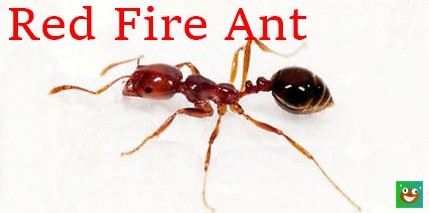
An easy way to identify a fire ant is by its dark abdomen and contrasting red thorax.
These ants are aggressive, eat anything in their path, and breed at an accelerated pace.
Fire ants can become worker ants in just 15 days. These ants are officially a pest in the United States, consuming over 300 million acres.
Little Black Ant
The little black ant is native to North America.
Known for their lustrous black hue, the workers are 1 – 2 mm long, and the Queen is 4 – 5 mm in size.
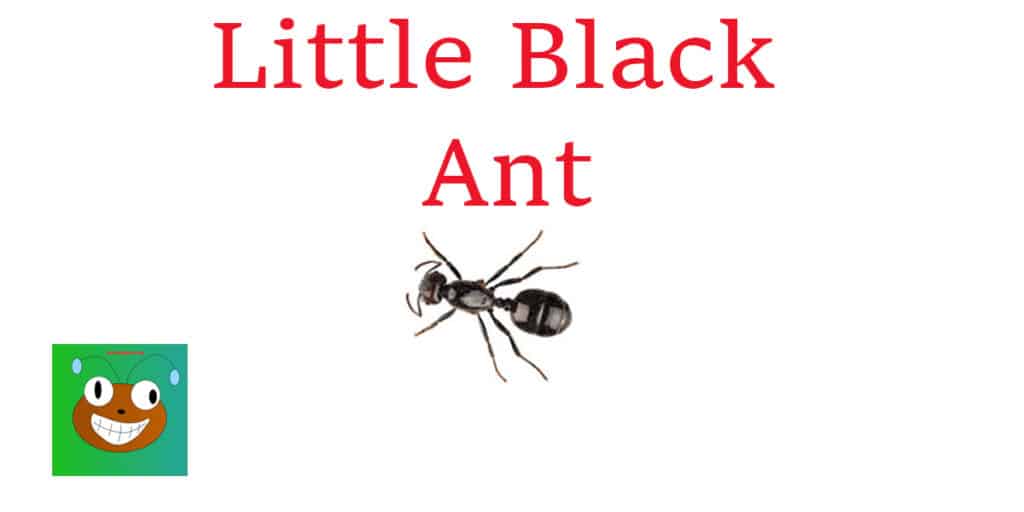
A colony may have more than one Queen because it’s a polygynous species.
A nest typically has a few hundred workers, a modest size.
These scavengers, known as Monomorium minimum, can eat anything, including dead insects and bird droppings.
Some of their favorite insects to eat are fall webworm larvae and codling moth caterpillars.
Additionally, they tend to collect honeydew insects like the soybean aphid. Although they prefer to nest on earth mounds, they may scan for other homes with ease of access.
Queens and males execute the nuptial flight, bonding in midair, mostly in summertime.
The males pass away soon after. Every Queen builds a new nest, removes her wings, then lays eggs.
Since this colony is polygynous, expect more queens shortly after. It takes around a month for an egg to mature into an adult.
Odorous House Ant
The worker-odorous house ants are around 3mm long and black to dark brown.
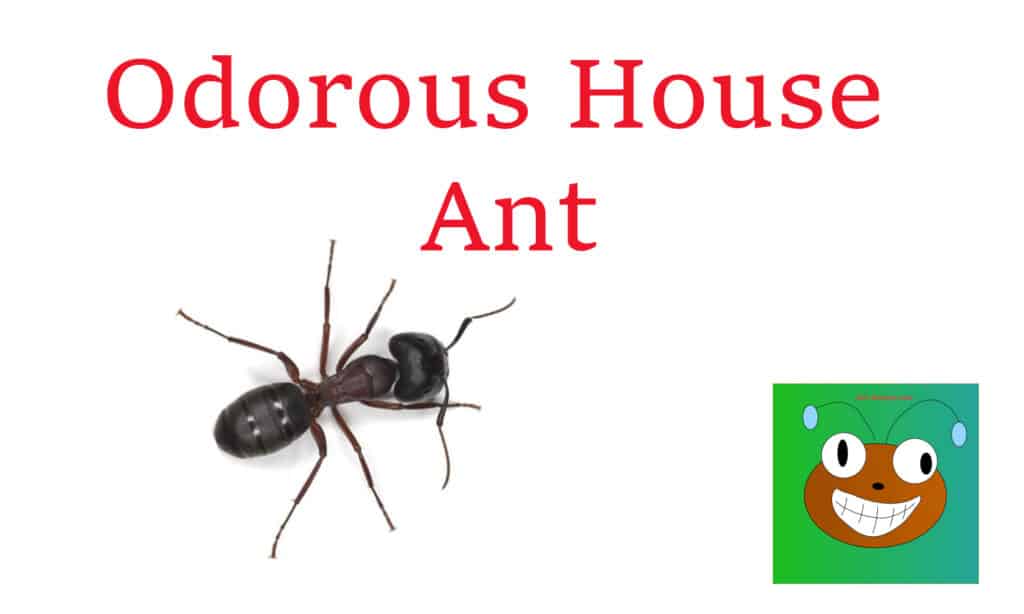
Additionally, they have antennae that resemble a long stick.
Crushed, odorous house ants produce a pungent, rotten coconut-like stench that gives these insects their name.
Odorous house ants build their nests indoors next to moist areas, such as heaters, heater cavities along hot water pipes, under leaking fixtures, and on termite-damaged wood.
Outside, odorous ants are frequently discovered on bare soil or beneath firewood piles. Odorous house ants enjoy eating sweets and particularly enjoy consuming honeydew.
Occasionally, they eat other things, such as pet food or insects. Approximately tri-monthly, they often relocate their nests because of rain.
They create new colonies following mating flights at the end of spring and summer.
Colonies are also split by the budding process, in which a queen leaves her nest with some workers to start a new colony elsewhere.
Pavement Ant
The head and thorax of pavement ants are marked with grooves, the thorax being the only part of the body-bearing spines.
Their size is usually between 2.5 and 3 mm in length.
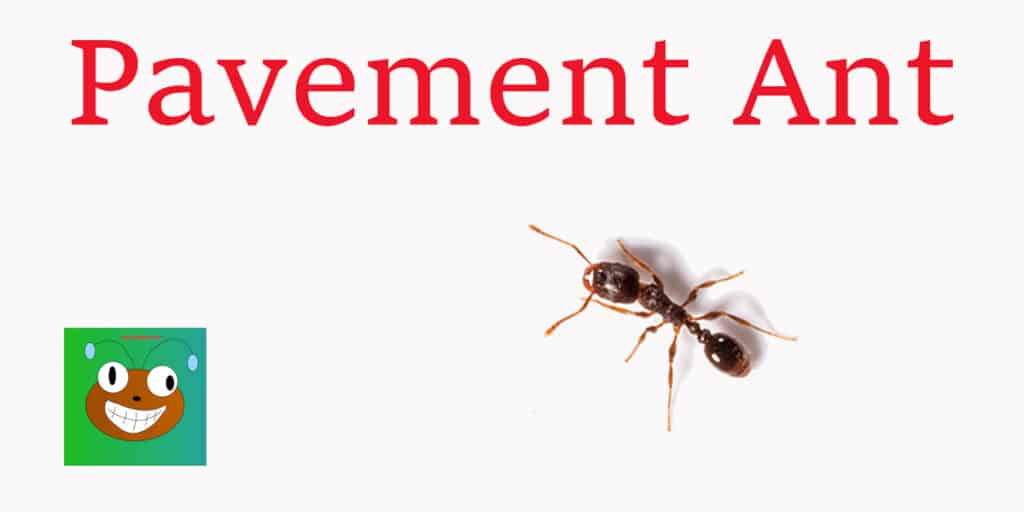
Pavement ants get their name because they typically make their nests under roadways, building foundations, and sidewalks.
Therefore, an area of disturbed soil near a paved surface is likely the result of pavement ant activity. Pavement ants may build their nests inside buildings near a heat source, mainly during winter.
These trailing ants consume many items, including honeydew from aphids, oily foods, seeds, and dead insects. Pavement ant colonies include up to 4,000 workers comprising several queens.
The queens are much bigger than the workers, going upwards of 9 mm in length.
The drones and young queens searching for partners are frequently spotted on nuptial flights during the end of spring and the start of summer. Drones and queens that reproduce have wings.
Pharaoh Ant
Another smaller and at about 2.4 mm (1/16 Inches), and interestingly the males and worker ants are actually the same size (not the Queen).
This ant can quickly become a nightmare if it infests your home, as it can survive even the most advanced household pest control attempts.

These ants will eat everything and are well known for infesting hospitals and other large corporate buildings that offer a cafeteria.
Because these ants don’t need soil or other substrates to create nests, they can infiltrate a building and start building out a home anywhere.
These ants do not care where they put their nest and have been seen nesting in everything from electrical wiring to underground sewage systems.
A unique (and sad) fact about Pharaoh Ants is that they have been caught feeding on the flesh of burn victims and are known for transferring diseases within hospitals.
Pyramid Ant
The popular term pyramid ant refers to the thorax’s stupa form. Despite being widespread across America, pyramid ants are much more prevalent in the southeast.
They are typically modest to medium in size. Each adult pyramid ant colony holds up to two thousand larvae with one or more queens.
The ant emits a rotten-coconut smell when it is disturbed or squashed. Pyramid ants measure around 1/8 of an inch. They have segmented bodies, and the tip of their abdomen has a pyramidal structure. A pyramid ant’s skull, thorax, and belly are brown or reddish black.
Pyramid ants build their nests in arid, sunny places like lawns, meadows, and sandy or barren terrain.
On the ground, they can be discovered hidden beneath many everyday things, like logs or benches.
Hunter-gatherers will gather and raise insects that produce honeydew, like aphids.
Pyramid ants are also notoriously predatory and carnivorous, happily consuming living and dead bugs and even fire ants.
Small Honey Ant
The little honey ant, often known as the fake honey ant, is a unique ant species. In some parts of the world, they are also called winter ants.
Workers of little honey ants are monomorphic, with their bodies being sleek and ranging from dark brown to black. Workers vary in length from 0.08 to 0.16 inches.
The Queens size is much bigger than the workers, measuring 0.28 inches.
Twelve-segmented antennas without a crossbar are used. Its petiole, the only piece of the thoracic pedicel, is highly present in this species.
The distinct mesonotum contraction separating the thin thorax into two segments makes this ant easy to identify.
These ants try to build nests indoors but many times end up making their homes outside.
The nests are typically found in the ground at slab joints, and houseplants are used to harvest whole communities.
Honey ants are tiny, tenacious, and forage along pathways.
Cakes, loaves, fruits, meats, nectar, honey, glucose, and other common household goods are just a few of the things they infect and thrive on (carbohydrates).
Thief Ant
Among the tiniest species of domestic ants is the thief ant. They received their name because they tend to build their nests near or inside those of other ant colonies, which they subsequently raid for food and eggs.
Although they can have numerous queens and thousands of workers, their colonies are typically smaller than other ant species.
While they have different traits, thief ants and pharaoh ants can frequently be mistaken.
Due to their preference for fatty meals and sweet delights, these ants are sometimes called grease ants or sugar ants.
The majority of the Eastern US is home to this species.
The bodies of thief ants range in color from light brown to pale yellow. They are usually 1.5 mm – 2.2 mm in size. Their body is irregularly shaped, with their thorax appearing to lack spines. But their waist comprises two nodes.
Velvety Tree Ant
These tree ants are covered in velvet and are approximately an inch long.
The red-brown hue of the skull and thorax contrasts with the soft black belly, which gives this insect its common name.
The typical habitat of this insect is outside, where it mostly consumes the honey that aphids, ladybugs, and scales produce when they infest trees, bushes, and other crops.
Foraging workers will only enter houses while looking for food. However, they will build their nests in damp wall gaps or wet or decaying wood.
If someone is outside working in the garden, velvety tree ants can climb on them and bite them.
They are frequently discovered around leakages in soffits, near windows, and baths.
Velvety tree ants are also prevalent in California, despite being seen on the slopes of mountains in the west, like many species closely related to them.
They are connected to tree hollows and decaying limbs in branches and build outside nests in rotten and rotting wood.
